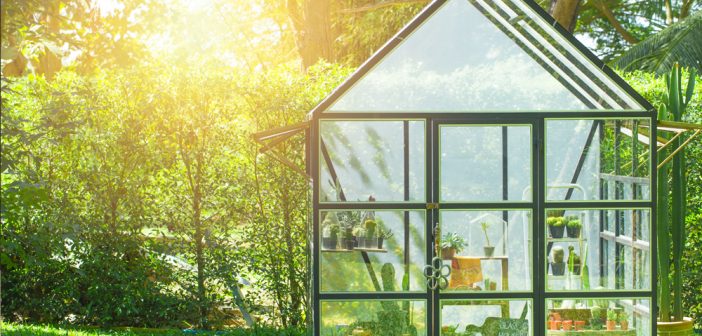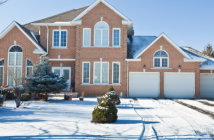Greenhouses may not seem cheap or easy to build, but they can be necessary for your farm or garden. Figuring out some important key factors before you get started on a greenhouse will help save you time and money. Here are 5 things to consider before adding a greenhouse to your operation.
1. Freestanding or attached?
Greenhouses come in two basic forms: freestanding structures or buildings that are attached to already-built houses. Both have their pros and cons.
Attached greenhouses have the benefit of having a pre-existing north wall to use as insulation. It can be costly to build a heavily insulated wall from scratch, so using the side of an already-built structure is a great cost-saving strategy. Attached greenhouses also don’t require building any other infrastructure to make the building accessible, though they may require some extra measures to prevent humidity and insects from migrating into the home.
Attached greenhouses are also inherently limited in design by the orientation and size of the home.
Free-standing greenhouses, on the other hand, can be built in any dimensions with any orientation. That means you can truly customize the materials from the ground up, including the foundation. For the same reason, though, building a free-standing greenhouse can be a more significant cost. Building a highly customized and well-constructed free-standing greenhouse is most suitable for those who intend to build a medium- to large-sized structure.
2. Size and Orientation
Choosing the ideal location and orientation of a greenhouse is crucial. You want your plants to have just the right amount of sun — too much and they will burn, too little and they will wither or freeze.
It’s ideal for a greenhouse to face directly south or southeast, since this is where the early morning sun will reach the plants. If that’s not possible, an east-facing orientation is second-best. If you don’t put your greenhouse in the ideal position for catching sunlight, you’ll limit the types of plants you’re able to grow in it.
Choosing the size of your greenhouse is perhaps the most fundamental consideration. You need to take the scale of your production into account. Even if you don’t grow commercially, some residential growers may prefer the large size and flexibility of a commercial model. Larger greenhouses allow for more shelving and are more likely to include climate control systems. However, if you don’t plan to expand your production or make a profit from your plants, a smaller greenhouse is probably the way to go.
3. Design
There are several factors to keep in mind when choosing the design of your greenhouse, from the ground material to the roof.
- •Foundation: The foundation can be built from a variety of materials. Wooden posts can be used, or a concrete slab can be poured to make the ground even and easy to work on. However, greenhouses are not usually carrying a heavy load, so it’s mostly based on local regulations and preference.
- •Pathways:After you initially prepare the plant beds, there is usually not much need to bring large wheelbarrows of material in and out of a greenhouse, so smaller pathways are often a fine way to maximize space.
- •Shelving: Shelving may be the last of your concerns, but if you intend to store certain materials in the greenhouse, it’s important to consider the size and location of shelving units. You will also maximize the amount of plants you’re able to store by having efficient shelving.
- •Roof: Roofs can be either even-span or lean-to. This will depend on whether the structure is free-standing or leaning on another building, as well as other factors like snow load.
- •Climate control and ventilation: Ventilation is helpful in the summer, though you may simply move your plants outside when it gets too hot in the greenhouse. Heating systems are absolutely crucial for the winter. Having an automated system makes it easier to maintain the ideal temperature and humidity.
4. Materials
Taking the time to design the greenhouse properly in the beginning means that you’ll save money later on lost plants and failing materials. However, that doesn’t mean you have to buy all your materials brand-new. With a keen eye, you can salvage high-quality materials like wood, steel, doors and windows from Craigslist, the Salvation Army, and even on the side of the street.
- •Frame: Frames are most often made from wood or metal. Wood is cheaper and easier to work with, especially if you plan to DIY, but it requires upkeep to prevent damage. Most commercial and kit greenhouses use galvanized steel, which has a longer life span than wood but offers less design flexibility.
- •Glazing: Pre-made greenhouses often come with glass or polyethylene. Glass can be heavy and is less insulating, while polyethylene, a type of plastic, is a cheap and effective option that can be easy to DIY. Polycarbonate and PVC are also good materials to use.
- •Insulation: Any walls that do not have glazing need to be insulated. The north and west wall are most important. You can use a wide variety of materials here, even foam or Styrofoam, depending on your budget and climate.
5. To DIY or Not to DIY
Whether or not you build your own greenhouse should be based on a number of factors. Firstly, consider the design. If you’re building a basic plastic-covered greenhouse, there’s a good chance that you can do it yourself in less than a day if you’re a bit handy with tools. If, on the other hand, you’re investing a significant amount of money into your space and intend to use it for larger-scale production, then hiring a professional for some or all portions may be more appropriate.
Even if you build your greenhouse yourself, you need to hire a professional to run electrical and water lines if you intend to build fans, heating systems and faucets. However, doing as much of the work yourself as you are physically able will make a wider variety of greenhouses available to you. If you go the DIY route, take a workshop and educate yourself as much as possible before getting started.
Greenhouses open up a whole new realm of growing possibilities. By going over these 5 basic areas of consideration, you’ll end up with a much smarter and more cost-effective plan for your greenhouse.








